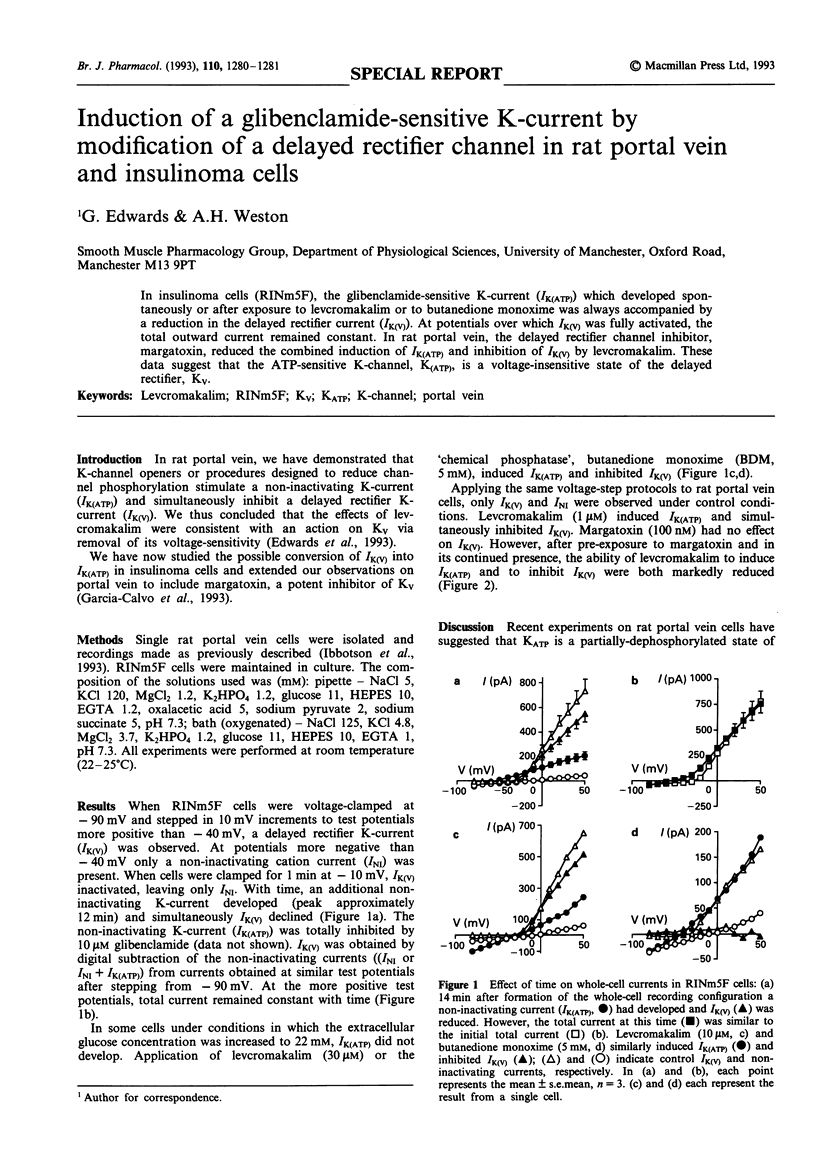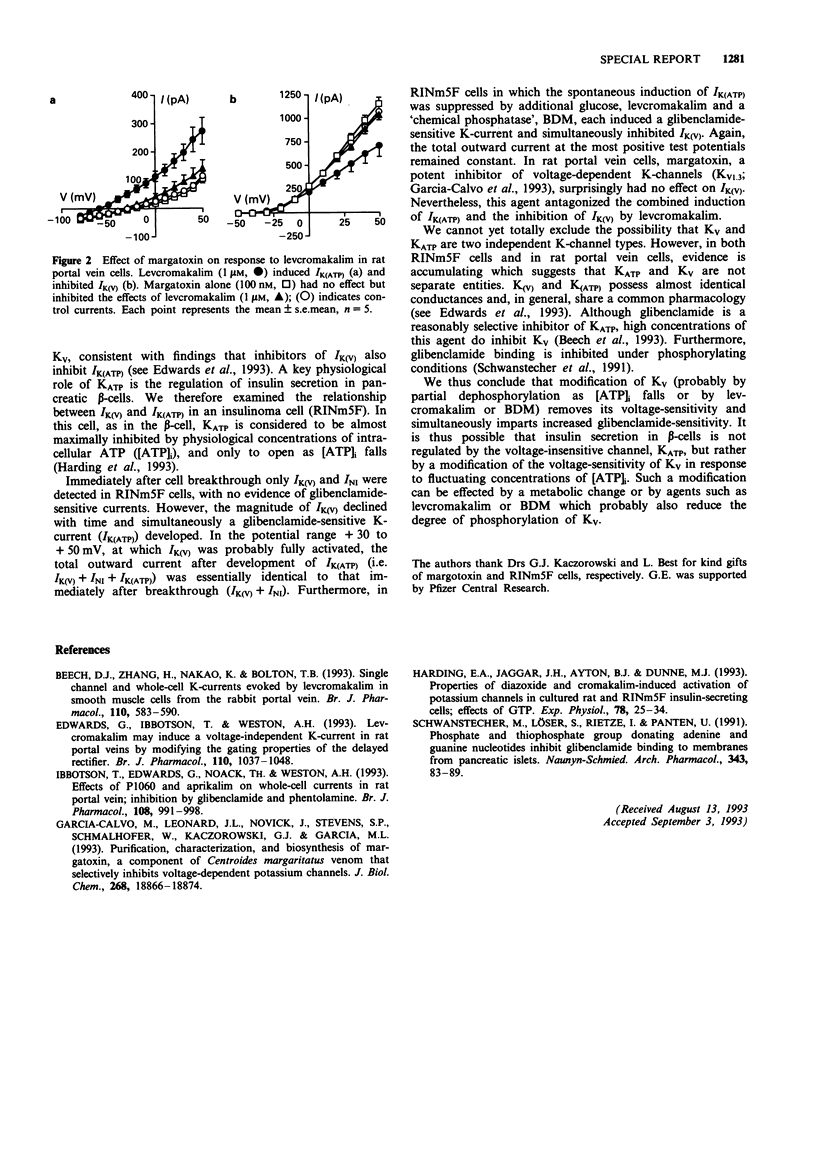Abstract
In insulinoma cells (RINm5F), the glibenclamide-sensitive K-current (IK(ATP)) which developed spontaneously or after exposure to levcromakalim or to butanedione monoxime was always accompanied by a reduction in the delayed rectifier current (IK(V)). At potentials over which IK(V) was fully activated, the total outward current remained constant. In rat portal vein, the delayed rectifier channel inhibitor, margatoxin, reduced the combined induction of IK(ATP) and inhibition of IK(V) by levcromakalim. These data suggest that the ATP-sensitive K-channel, K(ATP), is a voltage-insensitive state of the delayed rectifier, KV.
Full text
PDF

Selected References
These references are in PubMed. This may not be the complete list of references from this article.
- Beech D. J., Zhang H., Nakao K., Bolton T. B. Single channel and whole-cell K-currents evoked by levcromakalim in smooth muscle cells from the rabbit portal vein. Br J Pharmacol. 1993 Oct;110(2):583–590. doi: 10.1111/j.1476-5381.1993.tb13850.x. [DOI] [PMC free article] [PubMed] [Google Scholar]
- Edwards G., Ibbotson T., Weston A. H. Levcromakalim may induce a voltage-independent K-current in rat portal veins by modifying the gating properties of the delayed rectifier. Br J Pharmacol. 1993 Nov;110(3):1037–1048. doi: 10.1111/j.1476-5381.1993.tb13918.x. [DOI] [PMC free article] [PubMed] [Google Scholar]
- Garcia-Calvo M., Leonard R. J., Novick J., Stevens S. P., Schmalhofer W., Kaczorowski G. J., Garcia M. L. Purification, characterization, and biosynthesis of margatoxin, a component of Centruroides margaritatus venom that selectively inhibits voltage-dependent potassium channels. J Biol Chem. 1993 Sep 5;268(25):18866–18874. [PubMed] [Google Scholar]
- Harding E. A., Jaggar J. H., Ayton B. J., Dunne M. J. Properties of diazoxide and cromakalim-induced activation of potassium channels in cultured rat and RINm5F insulin-secreting cells; effects of GTP. Exp Physiol. 1993 Jan;78(1):25–34. doi: 10.1113/expphysiol.1993.sp003668. [DOI] [PubMed] [Google Scholar]
- Ibbotson T., Edwards G., Noack T., Weston A. H. Effects of P1060 and aprikalim on whole-cell currents in rat portal vein; inhibition by glibenclamide and phentolamine. Br J Pharmacol. 1993 Apr;108(4):991–998. doi: 10.1111/j.1476-5381.1993.tb13496.x. [DOI] [PMC free article] [PubMed] [Google Scholar]
- Schwanstecher M., Löser S., Rietze I., Panten U. Phosphate and thiophosphate group donating adenine and guanine nucleotides inhibit glibenclamide binding to membranes from pancreatic islets. Naunyn Schmiedebergs Arch Pharmacol. 1991 Jan;343(1):83–89. doi: 10.1007/BF00180681. [DOI] [PubMed] [Google Scholar]


